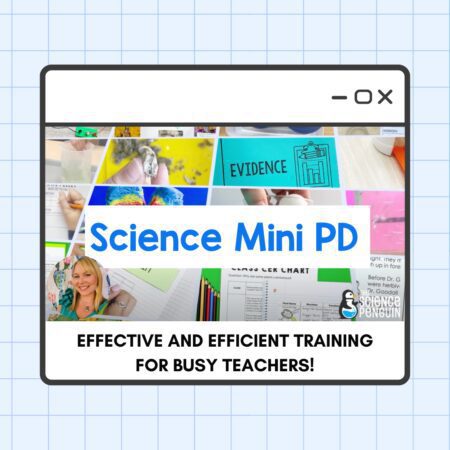If there’s one invention in this world I’m most thankful for, it’s the seatbelt. It saves lives and prevents serious injuries in our cars, planes, and even roller coasters. For as life-saving as they are, I have heard my students grumble about having to wear seatbelts in the car and how “annoying” it is when their parents are on them about always wearing a seatbelt.
NGSS Standards 4-PS3-1 and 4-PS3-3 have students asking questions and predicting outcomes about the changes in energy that occur when objects collide. Talking to kids about seatbelt use is not only practical, but it helps them understand how the transfer of energy works in collisions. We built this phenomena-based unit to do just that!
Here’s how we teach Speed, Energy, and Collisions in 4th Grade.
🚙 Engage: Seatbelts Are Important
To begin this unit, students watch a phenomenon video about seatbelts. They think about seatbelts that they might see in their life, from car seats to roller coasters. Once they have this concept in their head, they are given a definition for collisions. Then, they are asked to think about why seatbelts are important. We develop a CER (Claim-Evidence-Reasoning) Chart by making a claim about why seatbelts are important.
🚙 Explore: Does Motion Change During a Collision?
Students explore how motion changes (spoiler alert: it does!) when a collision occurs. In my classroom, we use toy cars that you wind up, but if you don’t have those handy, any car with a ramp would work. We even recommend getting a track if you can (Hot Wheels for the win!). Students start the cars at a measured distance, put a penny on top of the car, and let the car run into a book. They observe what happens to the penny when the car hits the book.
🚙 Explain: Reading and Watching
Students read a text about collisions and watch a video clip. As a class, we add evidence from those sources to our C-E-R chart.
🚙 Elaborate: Marbles in Motion
Using many of the same materials from the Explore section, students create a ramp from the book to a table. (Pro tip: you can also use a plastic ruler with a groove down the center). They roll a marble down the ramp from several distances and have the marble collide with a styrofoam cup. They measure the distance that the cup moves when the marble strikes it.
During this stage of the unit, we’re also working on our vocabulary for the unit.
🚙 Evaluate: Marbles in Motion
We revisit our C-E-R, synthesize the information, and construct our reasoning.
🚙 Extend: Seatbelt Prototype
We’re putting our science and engineering principles into play here! Students are tasked with designing a seatbelt prototype for an action figure. They are given a set of rules (no glue allowed here!) and then they’re off to test, refine, and test again. Students have to explain their designs with drawings and labeled sketches.
🚙 Quiz
The unit concludes with an 8-question multiple choice quiz and Short Constructed Response.
By fostering critical thinking through tools like the CER (Claim-Evidence-Reasoning) Chart, hands-on activities with toy cars and marbles, and even the innovative challenge of designing a seatbelt prototype, we’ve empowered students to grasp the complexities of energy transfer during collisions.
If you’re interested in this unit with all the printables, directions, sample CER, and examples, it is available on TpT. Speed, Energy, & Collisions Phenomena-Based Unit




